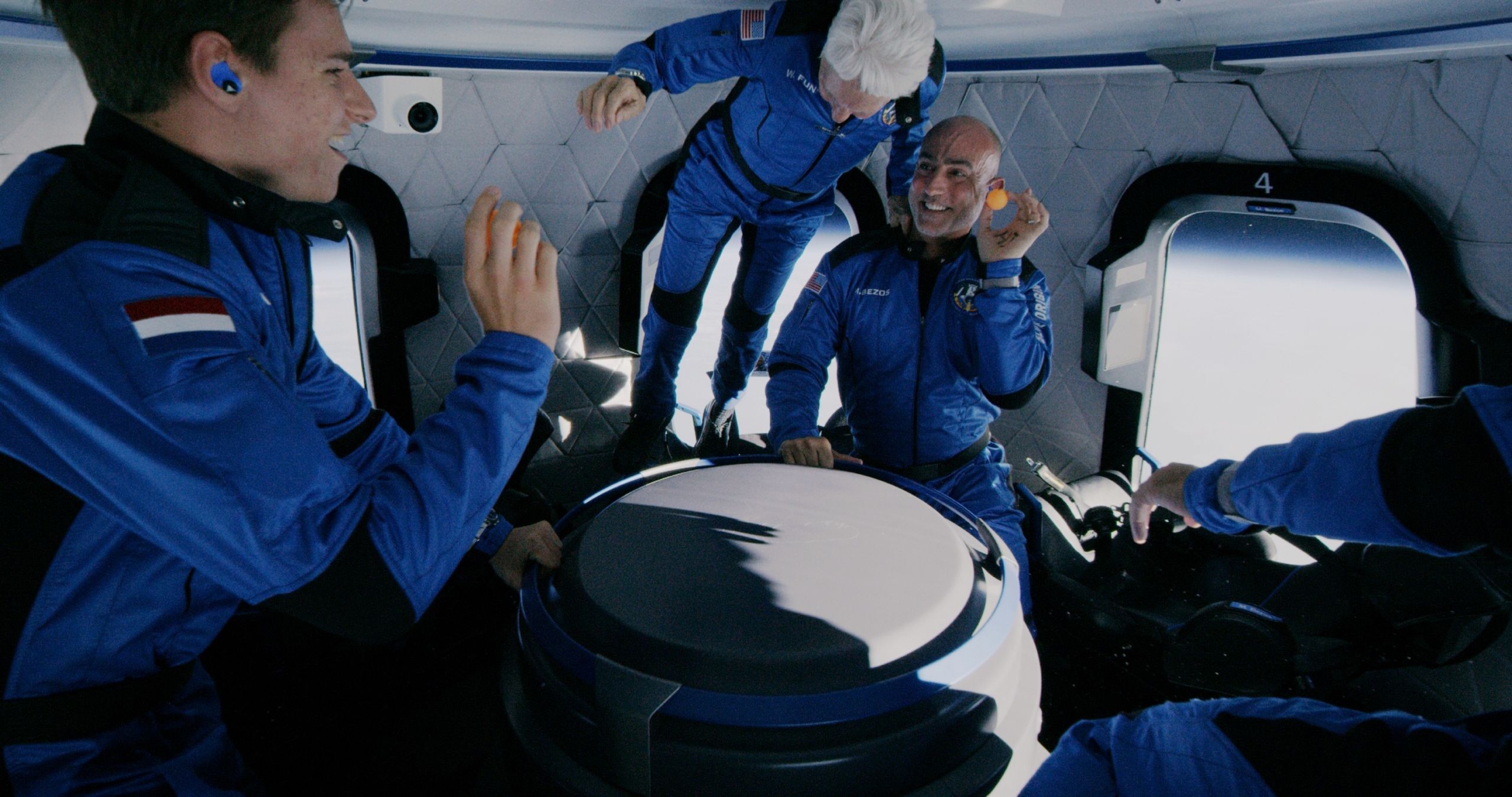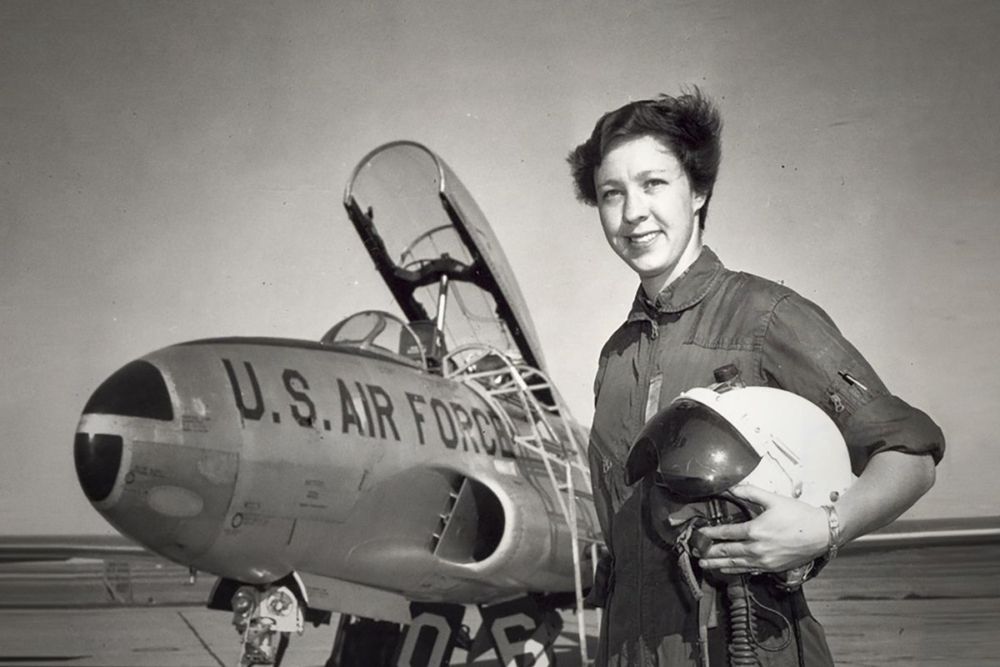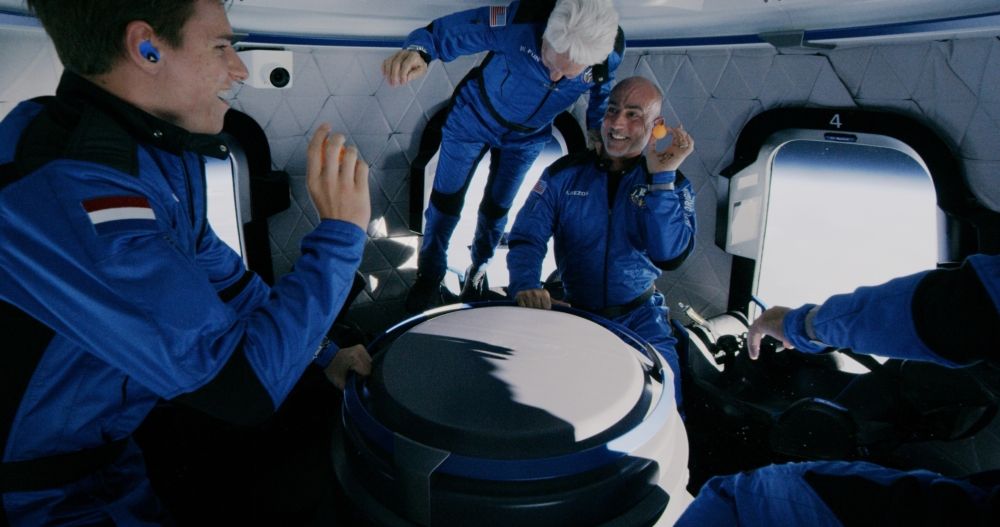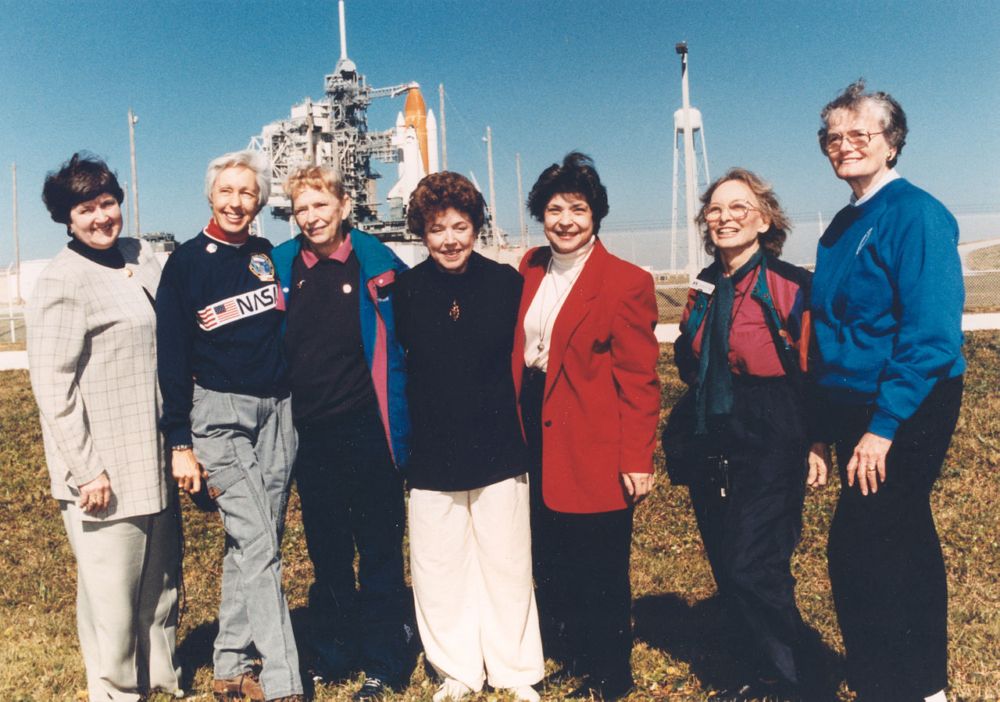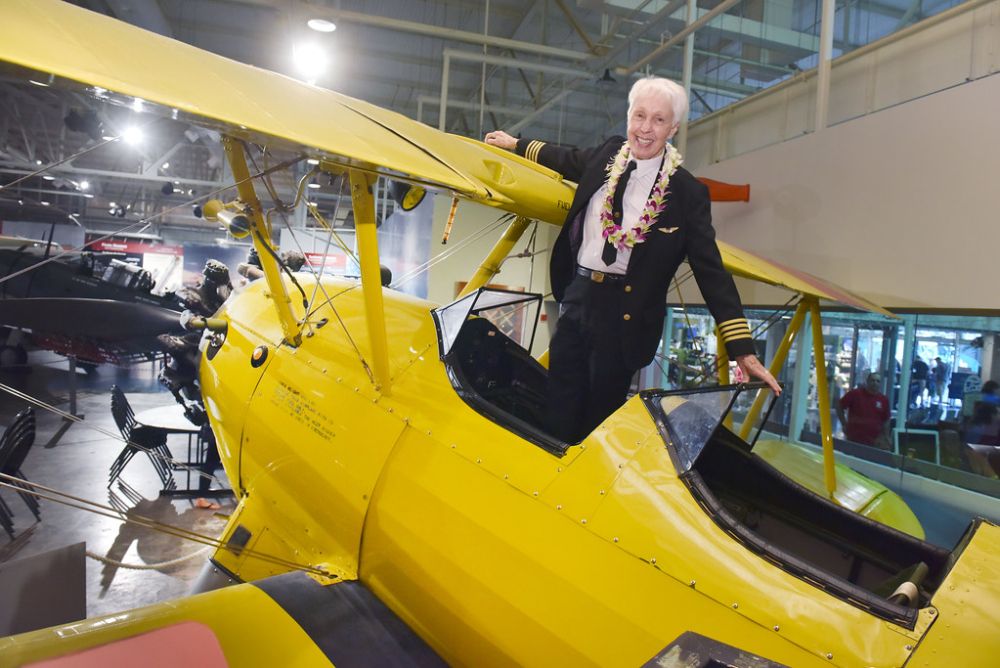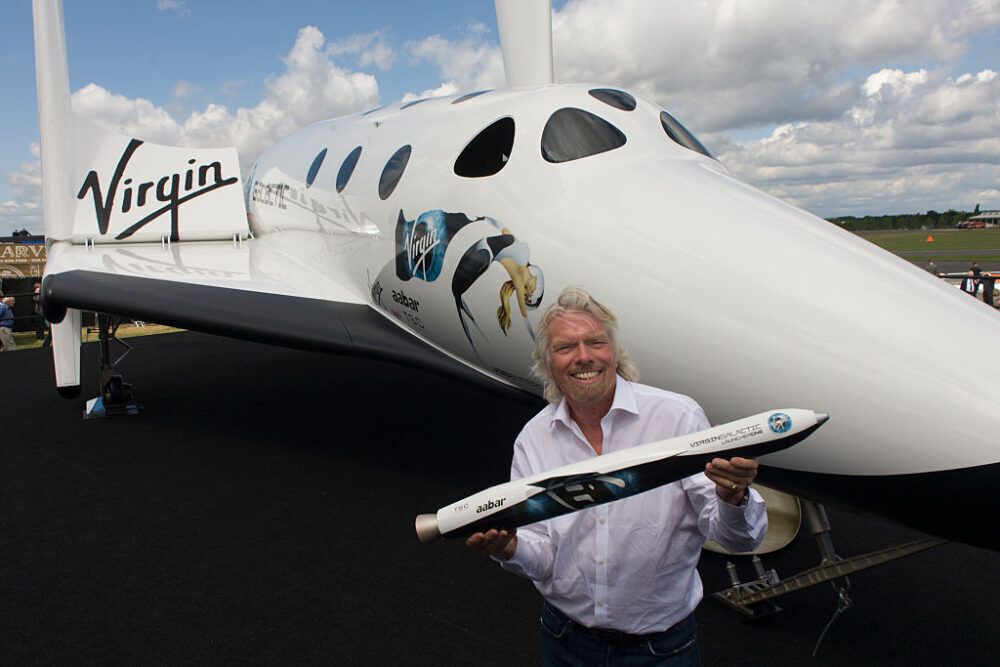Wally Funk became the oldest person in history to go to space earlier this week. She joined Jeff Bezos, Mark Bezos, and Oliver Daemen on the ambitious Blue Origin New Shepard space flight. Even though the 82-year old has had a strong relationship with space exploration during her career, her history in wider aviation also runs deep.
An ever-lasting love for aerospace
Born in Las Vegas, New Mexico on February 1st, 1939, Mary Wallace "Wally" Funk became passionate about aircraft from a young age. Notably, she was fascinated when she got close to a Douglas DC-3 when her parents took her to a nearby airport.
This love for planes would spur Funk on to set several records in aviation. After graduating from Stephens College in Columbia, Missouri with a pilot's license and an Associate of Arts degree in 1958, she continued her studies at Oklahoma State University where she obtained numerous pilot certificates and a Bachelor of Science degree in secondary education.
It was clear that she would be a leader in aviation. Even back then she was breaking new ground in her flying circles.
Funk went on to become the first female flight instructor at a United States military base after she took a job as a Civilian Flight Instructor of noncommissioned and commissioned officers of the army at Fort Sill, Oklahoma. Following this, she took on a post as a Certified Flight Instructor, Charter in Hawthorne, California and earned an Airline Transport Rating at the end of the 1960s.
The space race
Impressively, while Funk was pursuing a career in aviation, she was also making waves in the space industry. At the turn of the 1960s, she heard about a privately funded women’s astronaut fitness testing program run by NASA’s unofficial flight surgeon, W. Randolph Lovelace II.
This program was launched during a critical time in aerospace and the wider political sphere. The United States and the Soviet Union were ramping up efforts to outdo each other.
Interestingly, the 13 women in the program mostly underwent testing by themselves, hardly seeing one another. Funk was one of the three women in the group to make it to the second testing phase. This chapter involved psychological exams that saw time in a sensory deprivation tank.
Not this time
Funk was only in her early 20s during this period. Nevertheless, she was already proving she had what it takes. Sadly, the program would end up being scrapped.
“Even without any camaraderie to provide moral support, Funk did well on the myriad tests that the Lovelace Foundation had constructed to detect any possible physical vulnerability in a potential space traveler. She was one of only three women to undergo a second phase of testing: psychological examinations at the VA hospital in Oklahoma City, which included time in a sensory deprivation tank,” the Smithsonian Air and Space Museum shares.
“But in 1961, as the women were preparing to gather as a group in Pensacola, Florida, for advanced aeromedical tests that would include time in jet aircraft, they received telegrams announcing that Lovelace’s private project was abruptly cancelled. Because NASA did not have an official women’s astronaut program, the Navy withdrew its permission to use its facilities. Despite two days of House Subcommittee hearings in Washington, DC, in 1962, the program was never resumed.”
Funk might have been down, but she was not out. She went on to apply at NASA for the Gemini missions in 1962. She also tried and again in 1966. Altogether, she was turned down four times to be an astronaut, primarily because she didn’t have an engineering degree.
Inspection breakthroughs
Regardless, even though she did not reach her space goals heading into the 1970s, she continued to break ground in the aviation sector. She became a flight inspector for the Federal Aviation Administration (FAA), becoming the first woman to finish the agency’s General Aviation Operations Inspector Academy course. She would then accomplish a series of firsts during her time with the group.
Funk then joined the National Transportation Safety Board (NTSB) in 1974 to become its first-ever female Air Safety Investigator. Here, she used her expertise to investigate 450 incidents across the board.
Stay informed: Sign up for our daily and weekly aviation news digests.
Not letting go
Funk had accomplished a strong career in aviation, working at some of the most important posts in the United States. However, her desire to head to space did not fade away.
“I knew what I wanted to do and I want to go into space,” Funk previously said, as reported by Air and Space Museum
“And I will still go into space. …And if I am a hundred [years old], I’m still going into space. Somehow.”
Thus, six decades after her route to space was initially shut down, Funk finally made it amid the Blue Origin program. She is a prime example of how it’s never too late to give up on your dreams.
Funk did not just sit around and wait for the opportunity, her activity over the years kept the momentum throughout the decades. Nonetheless, she did not stop believing and admitted that she knew she would eventually make it.
What are your thoughts about Wally Funk’s journey to space over the decades? What do you make of the aviator’s accomplishments during her career? Let us know what you think of her story in the comment section.

